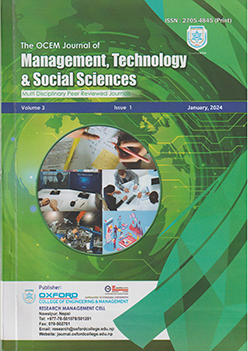
An Educational Study Focused on the Application of Mixed Method Approach
Ramesh Adhikari1,*; Tatwa Prasad Timsina2 1Ph.D. Scholar, Department of Education, Sikkim Professional University, India Research Supervisor, Department of Education, Sikkim Professional University, India Corresponding Email: adhikaryramesh2020@gmail.com
Abstract
This paper introduces and analyses a mixed-methods approach and further analyses the strengths and limitations of the convergent parallel design in educational research studies. This paper serves a valuable purpose in elucidating patterns, trends, and statistical relationships relevant to the impact of independent variables on dependent variables throughout the course of the study. Concurrently, this research design facilitates a holistic comprehension of the research problem by enabling a multifaceted examination from various perspectives. The analysis of this paper is based on books, articles, dissertations, and review articles where different research methods are applied in different studies. The analysis highlights that qualitative and quantitative data are collected simultaneously and independently in a convergent parallel mixed methods design. It is followed by integrating and comparing the two data types during the analysis and interpretation phase. The analysis further highlights that a quantitative survey could be administered to a larger population sample to collect numerical data based on the research questions and other relevant variables. The analysis also suggests that once the data collection is completed, the author should independently conduct separate analyses for the quantitative and qualitative data. The analysis signifies that quantitative analysis can cover descriptive statistics, inferential tests, and binary logistic regression analysis to analyze the quantitative data and identify significant associations between the independent and dependent variables. The qualitative data analysis method is content analysis to identify codes, key codes, subcategories, and main categories within the qualitative data.
The analysis shows that during the integration phase, a comparative analysis has to be conducted between the quantitative and qualitative findings to identify convergence, divergence, and contrast points between the two data sets. The results highlight that a triangulation approach supports establishing a cohesive analysis, which involves exploring the interconnections and mutual reinforcement between the qualitative and quantitative outcomes in the same format with more clarity. The analysis of this integrated analytical effort is subsequently incorporated into the discussion section. The analysis further indicates that the convergent parallel design is one of the mixed methods designs. In this section, the author’s responsibility lies in elucidating the consequences and interpretations drawn from the integrated results, encompassing theoretical foundations and practical implications.
Keywords:compared and constrated, convergent parallel design, mixed method approach, numerical data, qualitative methods, qualitative methods
